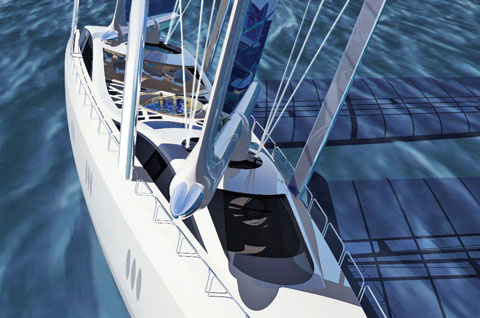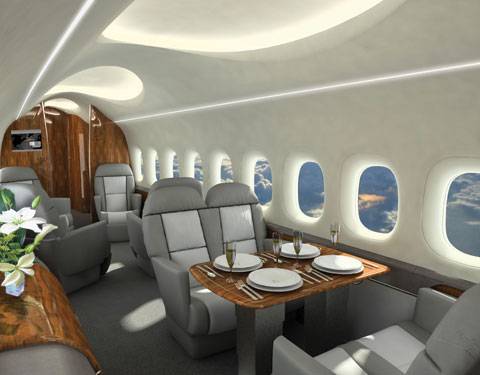Sifrer envisions one man piloting his ship from a touch screen and a computer maximizing the use of the sails.
Little in the modern world remains as elemental as setting sail where the wind and water, the salt and spray, the waves and weather are matched up against wit and skill. As the quest for greener technology calls for a return to fundamentals, one designer launches a new sailboat concept that promises to update the art of sailing, the truest use of wind energy.
Erik Sifrer is pained by the stagnation of the sailing industry in the last century. Reprise after reprise hit the waters, yet the crafts had few technological advances. Meanwhile, the flight industry soared from tests in North Carolina by the brothers Wright, to outer space and back.
In answer, he and his company, MIDES, presented the concept for Project GreenJet, a luxurious 57-meter super sailboat that better harnesses the endlessly renewable energies of wind and water, at the Dubai International Boat show in 2008.
The modern sailboat uses its sails a mere 2 percent of the time and requires a battalion of specifically trained and highly athletic sailors to police the rigging-20 for a 30-meter sailboat. Sifrer sees the sailboats of the future upping the first number and drastically shrinking the second. His concept introduces a fully computerized navigation and sail system. Sifrer envisions one man piloting his ship from a touch screen and a computer maximizing the use of the sails.
The GreenJet, named to emphasize both its environmental advantages and its ultra-luxurious high-tech nature, will raise the rigging in 30 to 40 seconds with hydraulic motors and rotate the aero sails 160 degrees. A canting keel with two foils promises to increase speed and an automated anchor further diminishes manual labor. Two side-bended, 62-meter masts will stand atop a teak deck, which boasts a comfortable beam of 11.7 meters.
Luxurious accoutrements include two separate deck areas covered by an elegant wave-shaped roof with circular sky lights. At the center of the main deck a gyroscopic pool floats as a symbol of pure relaxation. The interior design of the sailboat will be fully customizable and designed by Art Line Interior Design, and the aerodynamic carbon hull is brutally stylish.
The elegant Maltese Falcon took the first step toward applying new technologies to sailboating but GreenJet’s plans take it the extra mile. Sifrer predicts the ship might be seaworthy in three to six years, though a $70 million investment will be necessary. Renewing the millennia-old mode of transport would surely be a renewed promise to environmental sustainability. And by the look of Sifrer’s plans, his commitment to luxury was never anything but complete.





















